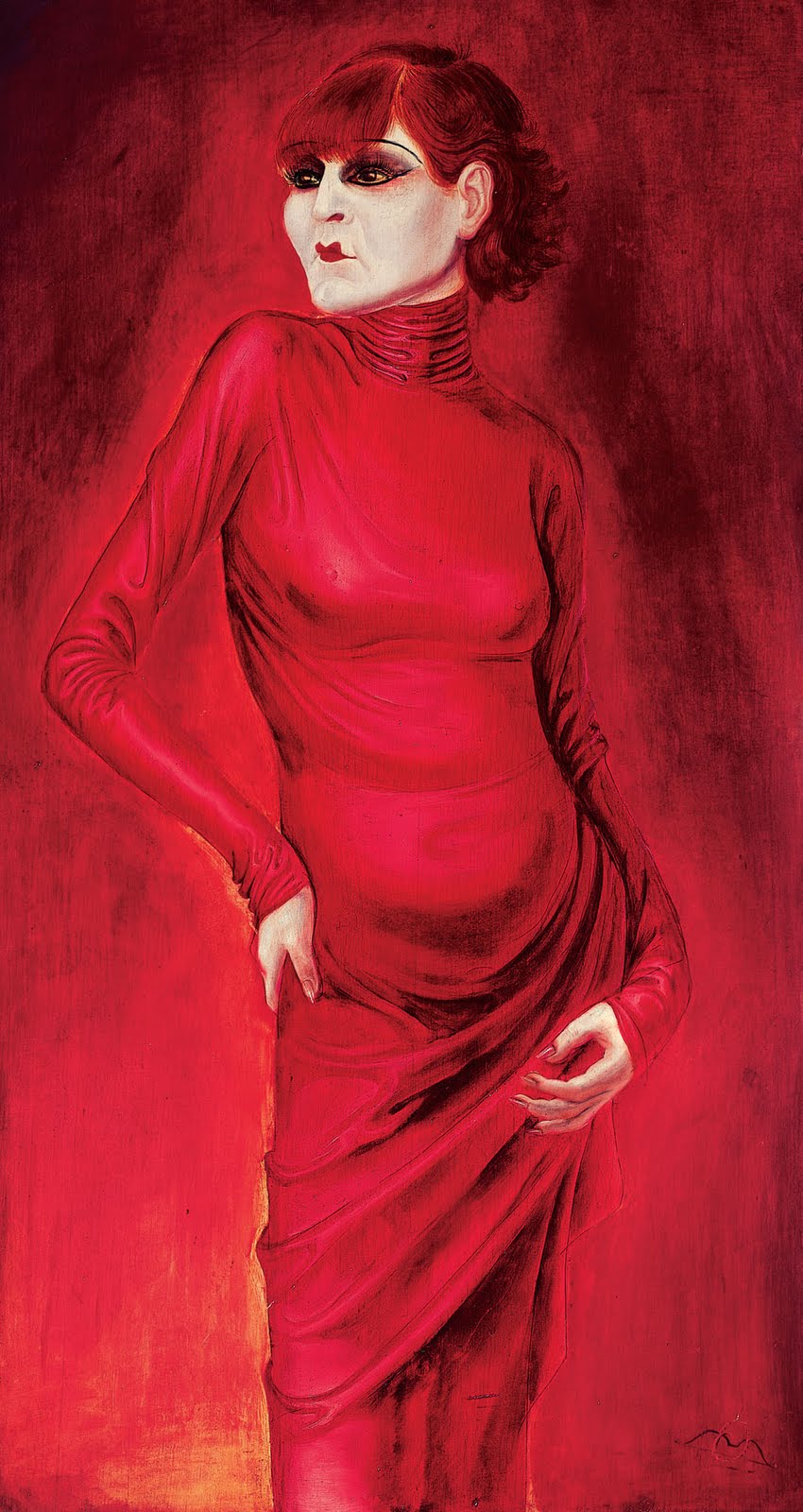

Husband Henri Châtin Hofmann
Queer Places:
St Thomas, Altenbraker Str. 1, 12053 Berlin, Germania
 Anita Berber (10 June 1899 – 10 November 1928) was a German dancer,
actress, and writer who was the subject of an Otto Dix painting. She lived
during the time of the Weimar Republic.
Anita Berber (10 June 1899 – 10 November 1928) was a German dancer,
actress, and writer who was the subject of an Otto Dix painting. She lived
during the time of the Weimar Republic.
Born in Leipzig to Felix Berber, First Violinist with the Municipal Orchestra, and Lucie Berber, an aspiring actress and singer, who later divorced, Anita Berber was raised mainly by her grandmother in Dresden. By the age of 16, she had moved to Berlin and made her debut as a cabaret dancer. By 1918 she was working in film, and she began dancing nude in 1919. Scandalously androgynous, she quickly made a name for herself. She wore heavy dancer's make-up, which on the black-and-white photos and films of the time came across as jet black lipstick painted across the heart-shaped part of her skinny lips, and charcoaled eyes.[1]
Sidonie Csillag, nicknamed Gretl, whose real name is Margarethe Csonka-Trautenegg, underwent under analysis with Sigmund Freud in Vienna in 1919, for four and a half months. In 1920, she inspired him to write the case entitled On the Psychogenesis of a Case of Female Homosexuality, which was his only case on the subject of female homosexuality and ended in failure. In February 1919, Sigmund Freud received a man from the Viennese bourgeoisie to discuss the fact that his daughter was flirting with a woman. A cure ensues, which he concludes by claiming that it was a failure. In 1920, this case was published in the German language under the title On the psychogenesis of a case of female homosexuality included in the French collection Neurosis, Psychosis and Perversion. In 2000, two German journalists and activists, Ines Rieder and Diana Voigt published her biography, Sidonie Csillag, homosexual at Freud, lesbian in the century, with documents on the woman she was in love with, Anita Berber, and supplemented by numerous interviews with the patient more than fifty years after the experience of the cure. Jean Allouch published a book on the subject in 2004, Shadow of your dog, psychoanalytic discourse, lesbian discourse.
Berber's hair was fashionably cutinto a short bob and was frequently bright red, as in 1925 when the German painter Otto Dix painted a portrait of her, titled "The Dancer Anita Berber". Her dancer friend and sometime lover Sebastian Droste, who performed in the film Algol (1920), was skinny and had black hair with gelled up curls much like sideburns. Neither of them wore much more than lowslung loincloths and Anita occasionally a corsage , placed well below her small breasts.[1]
Berber's dances – which had names such as "Cocaine" and "Morphium"[2] – broke boundaries with their androgyny and total nudity, but it was her public appearances that really challenged social taboos. Berber's overt drug addiction and bisexuality were matters of public gossip.[3] In addition to her addiction to cocaine, opium and morphine, one of Berber's favourites forms of inebriation was chloroform and ether mixed in a bowl.[4] This would be stirred with a white rose, the petals of which she would then eat.[5]
Aside from her addiction to narcotic drugs, Berner was also an alcoholic. In 1928, at the age of 29, she suddenly gave up alcohol completely, but died later the same year. According to Mel Gordon, in The Seven Addictions and Five Professions of Anita Berber: Weimar Berlin's Priestess of Debauchery,[6] she had been diagnosed with severe tuberculosis while performing abroad. After collapsing in Damascus, she returned to Germany and died in a Kreuzberg hospital on 10 November 1928, although rumour had it that she died surrounded by empty morphine syringes.[5] Berber was buried in a pauper's grave in St. Thomas Cemetery in Neukölln.[7][8]
Anita Berber by Charlotte
Berend-Corinth
In 1919, Berber entered into a marriage of convenience with a man with the surname Nathusius. She later left him in order to pursue a relationship with a woman named Susi Wanowski, and became part of the Berlin lesbian scene.[9]
Berber's second marriage, in 1922, was to Sebastian Droste. This lasted until 1923. In 1925, she married a gay American dancer named Henri Châtin Hofmann.[9]
My published books: